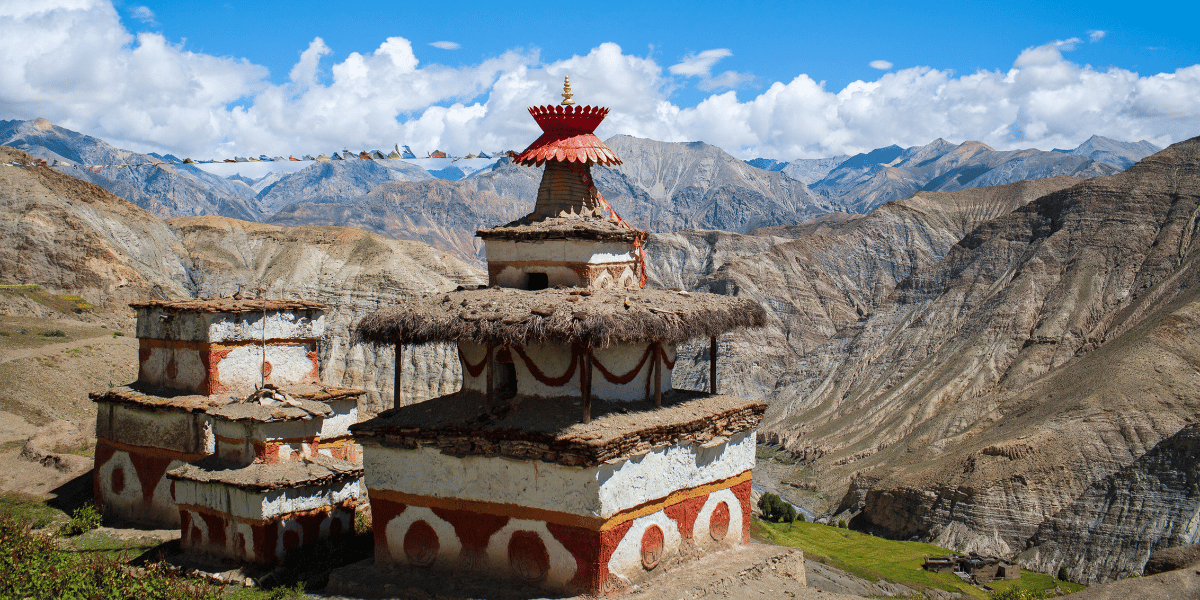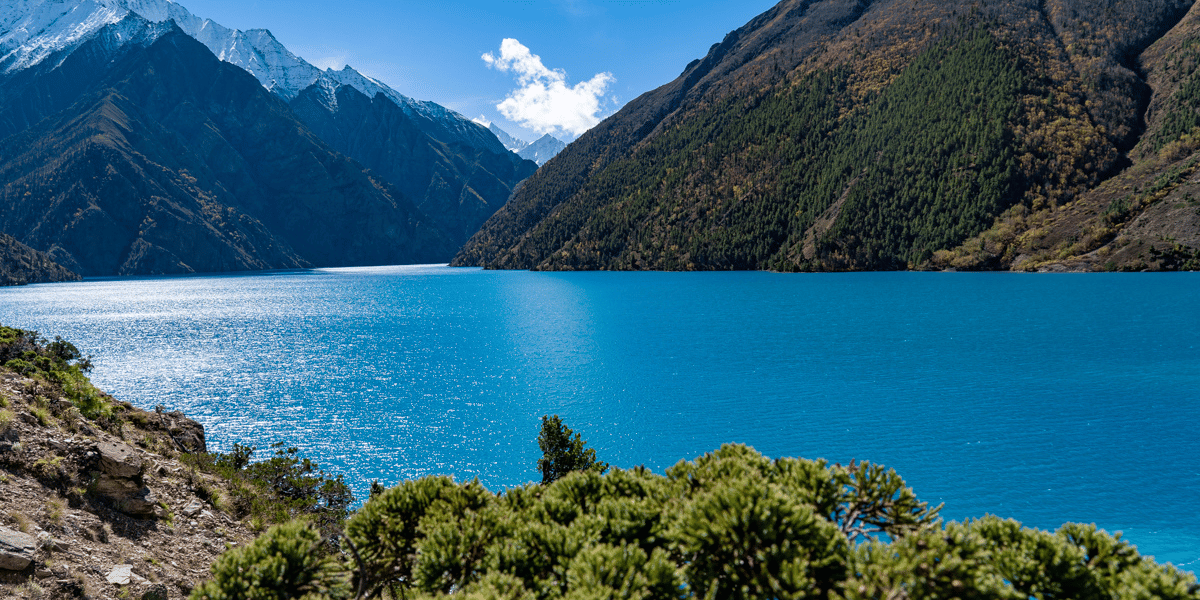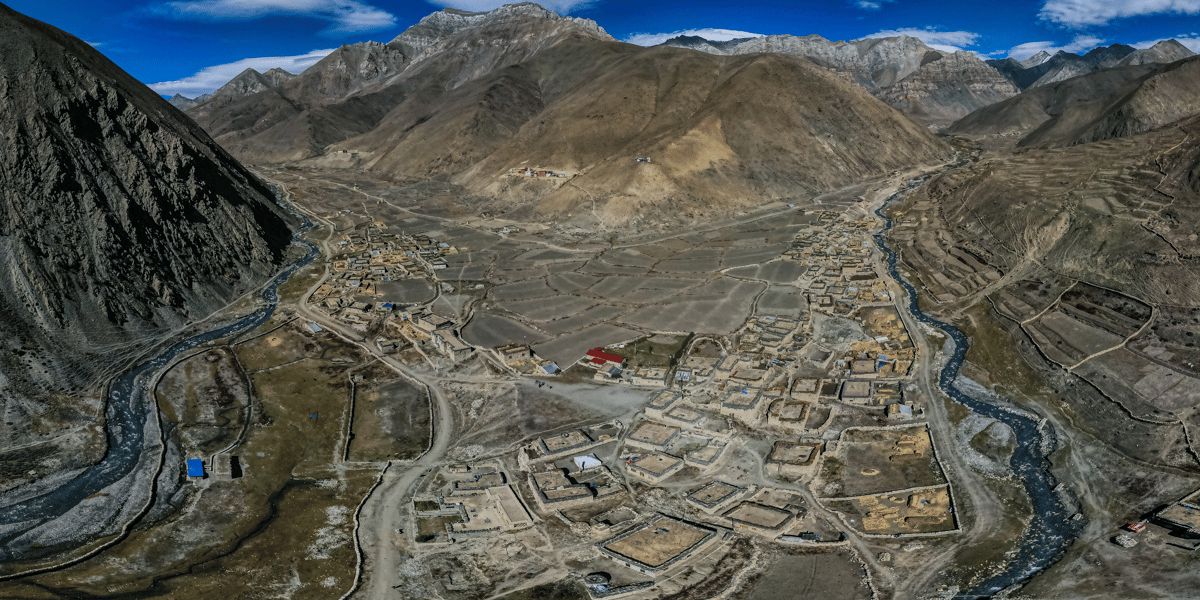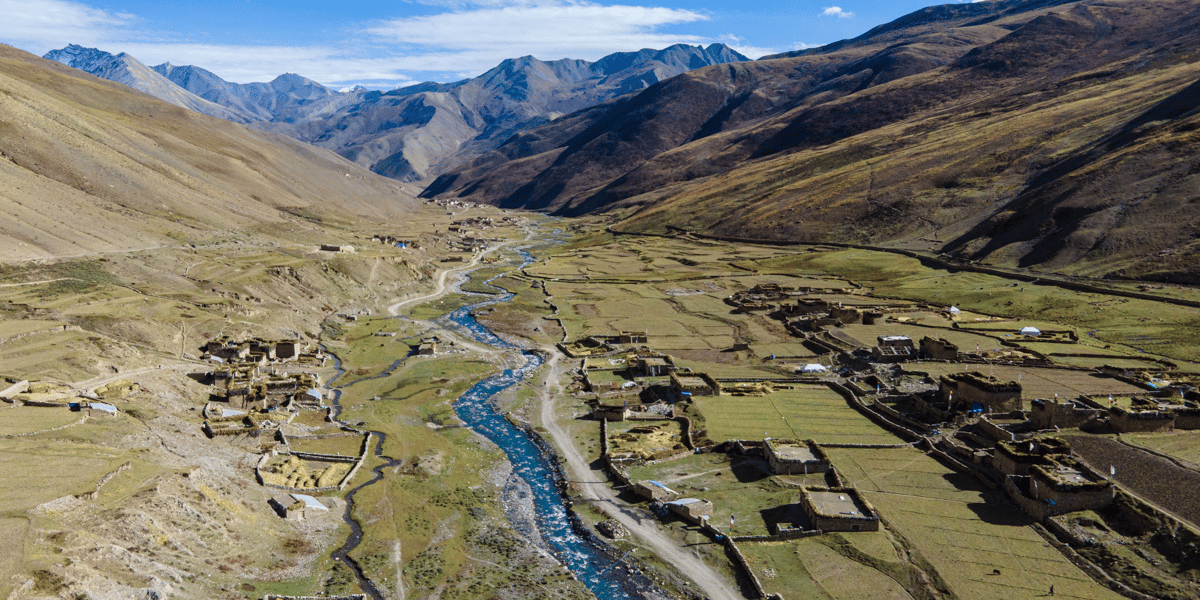The Upper Dolpo Circuit Trek is one of the most wonderful treks in the far western region of Nepal. Dolpo is located close to the Tibetan zone and is known for its unique geography and sedimentary formations. The region is encompassed by the majestic Himalayan mountain ranges, including the towering Dhaulagiri. Dolpo is the largest district in Nepal, with an area of 7,889 sq km (3,046 sq m). Trekking in the Dolpo region, which is rugged and enigmatic, will introduce you to breathtaking scenery, distinctive geology, and awe-inspiring culture, in addition to providing an exhilarating trekking experience. This trek to Upper Dolpo is a 20-day adventure that stands out as one of the most challenging and remote camping treks in Nepal. Its highly elevated landscape adds to the thrill and excitement of this remarkable journey. The Upper Dolpo region in Nepal is known for its untamed and unexplored beauty, making it a restricted area. It is situated near the Nepal-Tibet border, offering a unique blend of culture and nature. This trek is ideal for those seeking a unique and adventurous experience, as it allows you to discover the uncharted and enigmatic beauty of the mountainous deserts in Nepal.
You will encounter a variety of natural wonders on your journey, ranging from urban landscapes to expansive mountain ranges, all within a single trip. Nepal is renowned for its abundant natural and cultural diversity. Throughout your trek, you will have the opportunity to witness some of the country's most magnificent attractions, ranging from the bustling city centre to the tranquil and unhurried mountain dwellers. On your tour, you'll have the opportunity to explore some amazing destinations listed below, offering a one-of-a-kind travel experience.
Kathmandu - The City of Temples
Kathmandu, the capital of Nepal, is often referred to as the "City of Temples" due to the numerous temples scattered throughout the city area. Starting your journey in Kathmandu, you will explore the city and gain insight into the nation by visiting ancient religious sites and royal palaces before embarking on your trek to Dolpo. The following historical places are listed as UNESCO World Heritage Sites:
During your stay in Kathmandu, you will visit some of the wonderful landmarks during your sightseeing, starting at Kathmandu Durbar Square. This royal palace in Nepal is truly stunning, situated in the heart of Kathmandu. Within the square, you can find a variety of temples and architectural structures dating back centuries, showcasing ancient beauty spread throughout the landscape. Another attraction is Swayambhunath, also known as the 'Monkey Temple', located on top of a small hill. This site is dedicated to both Hindu and Buddhist religions, promoting religious harmony. Located on top of a hill, visitors must climb hundreds of stairs to reach the summit, offering a breathtaking panoramic view of Kathmandu city. Up next is the Pashupatinath Temple, a highly respected Hindu temple devoted to the deity Shiva. This Shiva temple is considered one of the most important in the world, attracting thousands of devotees daily. The pilgrimage site was constructed during the Malla era, showcasing Pagoda style architecture with numerous magnificent architectural sites. Finally, the Boudhanath Stupa is a significant Buddhist pilgrimage site, boasting one of the largest stupas globally. This site is highly revered by Buddhist people for its significance. This place attracts thousands of visitors who come to pay their respects. This place is frequently visited by religious individuals seeking spiritual fulfilment, as they find it to be very serene and spiritually significant. The grand stupa is adorned with colourful flags, symbolising peace across the world.
Juphal - Gateway to Dolpo
Juphal is situated at an elevation of 2,500 metres in the Dolpo region, home to the only operating airport in the area, making it the starting point for the Dolpo trek. Dolpo is one of the least explored regions in Nepal, showcasing its untamed natural beauty and unique culture that sets it apart from other regions of the country. Aside from the rural setting, a domestic airport connects other parts of the country to Dolpo, making it noteworthy. Although there are no direct flights from Kathmandu to Juphal, one can access the region by taking a connecting flight from Nepalgunj, located on the border of Nepal and India. From Dolpo initially, the walking journey starts in the Dolpo region. The flight to Juphal offers a captivating experience as you witness the landscape transition from lush flatlands to towering snow-capped mountains seamlessly.
Villages en Route
As you start on the trek, you'll traverse diverse landscapes, captivating trekking paths, and picturesque villages along the way. The Dolpo region is one of the least explored trekking areas in Nepal, with fewer human settlements compared to other trekking regions in the country. There are few settlements and villages with a population that is full of beauty and rustic charm. The villages are located in picturesque places surrounded by high hills and stunning nature, adorned with a fascinating ancient religion called the Bon-Po religion. You come across places such as Ringmo, Saldang, Dho Tarap, and Dunai. The places are situated in serene locations with breathtaking views all around. They are home to people who practice ancient religious beliefs, making them fascinating spots to gain insight into the rich culture and traditions. The villages are situated at high altitudes, ranging from 3000 to 4000 metres. They offer a stunning contrast between lush alpine forests and arid landscapes, showcasing their natural beauty.
Shey Phoksundo National Park
Shey Phoksundo National Park, ensconced within the rugged wilderness of western Nepal, is a sanctuary of unparalleled natural beauty and cultural significance. The park's centrepiece, Shey Phoksundo Lake, stands as a major attraction along the trekking routes, offering visitors a glimpse of one of Nepal's most stunning natural wonders. The lake's captivating turquoise hue, shifting with the passing seasons, draws tourists from around the globe, with its distinctive Y-shape adding to its allure. Renowned not only for its aesthetics but also for its religious significance, Shey Phoksundo Lake holds a special place in the hearts of locals who consider it one of their holy sites. The lake's colour, transitioning from green to vibrant turquoise blue, seems to hold a mystical quality, further enriching its appeal for both tourists and locals alike, cherished for its cultural and spiritual resonance.
Another integral feature of Shey Phoksundo National Park is the Shey Gompa, a Tibetan Buddhist monastery perched at an elevation of 4200 metres within the park's boundaries. Also known as the Crystal Monastery, Shey Gompa traces its origins back to the 11th century, making it one of the oldest religious sites in the region. Its significance is amplified by its proximity to the crystal mountain, lending it a profound spiritual aura. Furthermore, Shey Gompa serves as the venue for the Shey Festival, a grand event that occurs once every 12 years, drawing pilgrims and devotees from far and wide to partake in rituals and celebrations, showcasing the deep-rooted cultural heritage preserved within the sanctuary of Shey Phoksundo National Park.
High Trekking Passes
This trek is known for its challenging and high-altitude trekking passes, which is one of the major challenges during this trek. The Upper Dolpo region is renowned for its breathtaking high passes that soar above 5000m, providing a demanding and awe-inspiring adventure for trekkers. Throughout this trek, you'll come across a series of exhilarating passes that are essential to conquer to complete the journey. The upper Dolpo circuit trek reaches its pinnacle at the breathtaking Nagdo La Pass, which stands tall at an impressive elevation of 5,350 metres above sea level. Traversing the passes can be quite physically demanding, as it requires walking uphill towards the summit. The first pass you will come across is Nagdo/Nagdalo La Pass, which is at an elevation of 5,350 m/17,553 ft above sea level. If you walk along the bank of the Tuk Kyaksa Khola, you will eventually reach High Camp. From there, you can continue to the Nagdo La Pass. The second one is Sela/Gela Pass at an elevation of 5094 m/16,712 ft. You will come across this pass on the 11th day of your trek. This pass links the villages of Bhijir and Saldang. And Jayanta La Pass is the final pass that you will cross during your Upper Dolpo Circuit Trek. It is located at an elevation of 5,220m/17,126 ft above sea level. To cross this pass and reach Dho Tarap, it will be necessary for you to stay overnight at the high camp.
What to expect?
The Upper Dolpo Circuit Trek is a remarkable adventure in Nepal's remote far western region, offering a challenging and awe-inspiring journey through a landscape filled with natural wonders and enigmatic beauty. Nepal offers a rich tapestry of natural and cultural diversity that varies from region to region, encompassing a wide range of historical and geographical features. Going on this trek will provide you with an up-close and personal experience of the unique regions and cultures that make Nepal so special. Starting your trip in Kathmandu, the capital of Nepal, you will have plenty of time to explore and witness the national treasures in the form of religious and cultural architecture and landmarks. You will go on a serene sightseeing adventure where you'll have the opportunity to explore Nepal's UNESCO World Heritage Sites and gain a deep understanding of its vibrant culture. After exploring Kathmandu and making preparations for the trek, you will board a domestic flight to Nepalgunj. From there, you will catch another connecting flight to Juphal, which will be the starting point of your walking journey. In Juphal, you will have the opportunity to meet your trekking team, including porters, cooks, and other members of the trekking team, as this is a camping trek.
During your trek, you will walk through a breathtaking landscape that transitions from lush alpine vegetation to rugged, arid desert-like terrain. During your journey, you will encounter captivating villages nestled along the trails, each with its own unique culture and welcoming residents. The trek offers a unique opportunity to immerse yourself in the simplicity of life and the raw splendour of nature. Throughout the journey, you will have the chance to stay in both tented accommodations and local tea houses in the surrounding villages, enhancing your trekking experience. Along with a breathtaking trekking journey, you'll discover surreal places with an air of mystery, all while being surrounded by some of the most stunning views imaginable. The journey ahead is truly awe-inspiring, encompassing both stunning beauty and formidable obstacles. This trek is famous for its challenging nature, with the region's high elevations and treacherous passes that will truly put your skills to the test. The trekking passes are situated at an altitude of over 5000m, presenting a formidable challenge to overcome. The trek is quite challenging, but the view and experience make every step worthwhile. During the trek, you will have the support of a knowledgeable guide who will provide you with all the necessary information and ensure that your journey is both memorable and smooth.
The Upper Dolpo Circuit Trek provides a breathtaking opportunity to explore the hidden and untouched splendour of Nepal's highlands, where inhabitants lead simple and tranquil lives. This trek is perfect for individuals who want to experience and fully embrace the peacefulness of nature. This trek is ideal for those seeking a genuine connection with nature, combined with an immersive camping experience. This trek is both stunning and challenging, with an average elevation of 4000m above sea level. The high altitude poses a risk of altitude sickness, and the lack of facilities adds to the difficulties. However, this trek is truly worth every step, as it takes you to mysterious and mesmerising places full of ancient beauty and culture. Here, you will witness and experience sights that you have never seen before. Join us for an incredible journey to the untouched beauty of Dolpo, where nature reigns supreme.
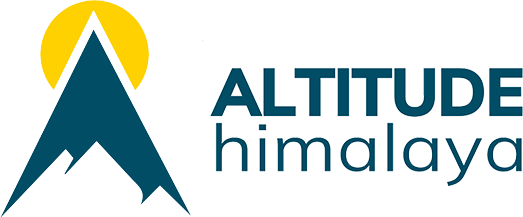

 Adventure
Adventure
 Couple
Couple
 Family
Family
 Luxury
Luxury
 Motorbike
Motorbike
 Photography
Photography
 Wildlife
Wildlife
 Yoga
Yoga
 Annapurna
Annapurna
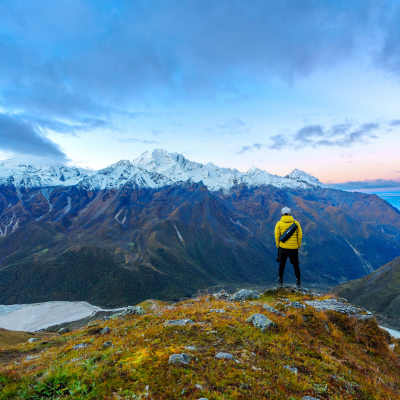 Langtang
Langtang
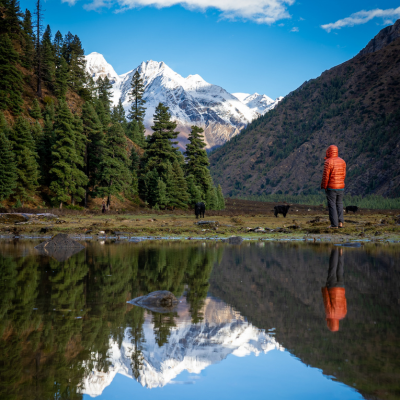 Dolpo
Dolpo
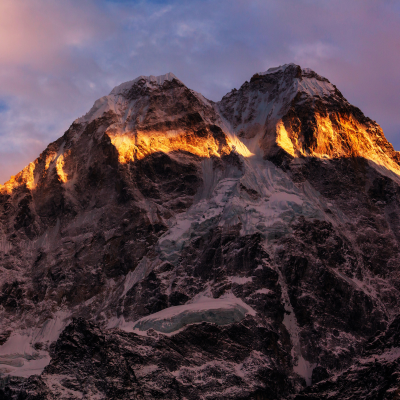 Eastern Nepal
Eastern Nepal
 Everest
Everest
 Manaslu
Manaslu
 Western Nepal
Western Nepal
